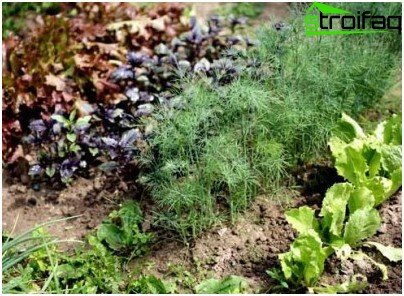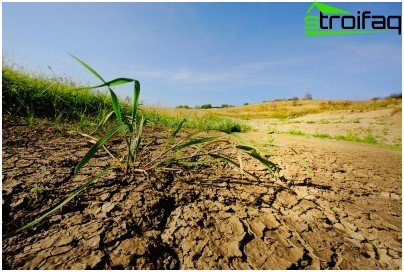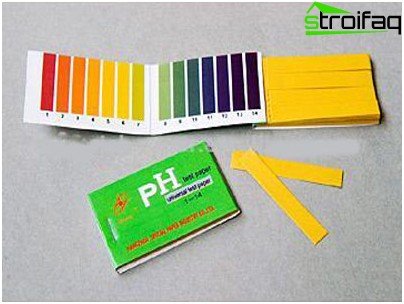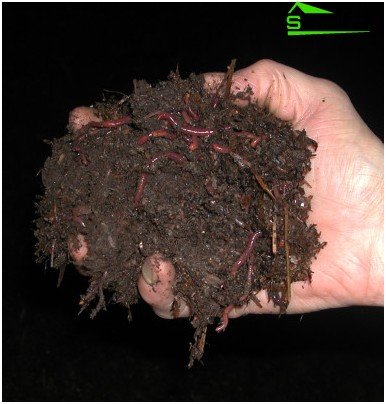All about the soil in the country
Soil is one of the main factors determining the condition of plants. Therefore, productivity directly depends on its composition. Particle size, acidity, the amount of humus, the presence of microorganisms – all this determines the success of gardening and horticulture. Having paid enough attention to the soil in the country, you can solve a wide range of problems and radically change the nature and success of gardening.
Content
- What are the soils
- How to change the acidity of the soil
- How to create a fertile soil layer
What are the soils
- Sand
Their other name is lungs. There are few mineral particles and humus in such soils, so they are easy to process, but they retain water poorly and are not particularly fertile, because nutrients are constantly washed out of them. Growing plants under such conditions requires too frequent fertilizing. It is much more effective to work on the mechanical composition of the sandy soil in the country and begin to regularly add binding and compacting components to it, such as clay and drill flour, peat. The addition of humus and compost contributes to an increase in the number of microorganisms, which also favorably affect the condition of the soil. In addition to these measures, periodic mineral top dressing is also required..
- Sandy loam
Such soils are close to sandy, but they are better suited for the cultivation of plants. Their chemical composition is balanced, and they are richer in microorganisms. Good moisture capacity and breathability prevent the leaching of nutrients and ensure their delivery to the roots, drying is limited to the upper layer, the crust formation characteristic of clays does not occur. They also warm up easily. Loams are usually improved by applying peat, manure and a small amount of mineral fertilizers..

A rich harvest is the dream of any gardener
- Clay
Such soils are also called heavy. Very small particles form them, which stick together and form a viscous mass, difficult to process. An agonizing breakdown of clods adhering to a chopper is a common lot of gardeners working on clay soil. Since the particles adjoin each other very tightly, the movement of air between them is also difficult, organic substances are poorly decomposed, and microorganisms are not numerous. Therefore, clay soils are also poor..
Oddly enough, but in clay soil, plants suffer from a lack of moisture. It would seem: the substrate retains water, what else is needed? However, due to the too tight adherence of the particles, the water does not move well inside the clay soil, and simply does not reach the plants. In addition, the roots also suffer from low temperatures. The closed layer of clay is poorly heated, and its lower layers remain cold. It also slows down all biological processes and chemical reactions..
The increase in clay soil fertility consists mainly in giving it a looser structure. To do this, make peat and sand. Adding 30-40 kg of sand per square. m significantly increases its thermal conductivity, moisture mobility, ease of processing. In addition, it is useful to add manure and compost, this will increase its nutrient richness in a short time. But clay mineral soils, as a rule, do not need mineral fertilizing. However, clay can vary significantly in chemical composition, so special analysis is appropriate in some cases..

Few plants can survive on clay soil
- Loamy
According to their properties, they occupy an intermediate position between sand and clay, while possessing the best qualities of both. They represent the best option for gardening and horticulture, have good grain and lumpiness, are easily processed, and retain their structure for a long time. The introduction of organic fertilizers into such soil is necessary only to maintain its fertility, and mineral fertilizers are not required at all. If there are any doubts about this, then a special biochemical analysis can be done..
- Rocky
This option is relatively rare and requires tremendous effort in order to achieve a good harvest. However, residents of many highlands have made significant progress in cultivating their territories. So the matter is not hopeless. First, such a site is cleared of the largest stones. Then the fertile land is simply imported or created over several years from compost, ash and green manure. If the site is inclined, then terraces are formed on it, reducing the negative effects of weathering and erosion of the soil.
- Peat bogs
The main disadvantage of soils is their lack of nitrogen. In addition, they have the ability to absorb and retain water like a sponge, so you need to change not only their chemical composition, but also the structure. Therefore, the improvement of such soil begins with the introduction of coarse sand or clay flour. Then it is necessary to add phosphorus-potash fertilizers in order to increase the content of these elements. And finally, peaty soil is enriched with components rich in microorganisms. It can be manure, compost or special microbiological preparations.
How to change the acidity of the soil
Another indicator that must be taken into account when creating a garden or a vegetable garden in a country house is soil acidity. This indicator is determined by the presence of hydrogen ions and is indicated as pH. There are acidic soils (pH = 3-5.5), neutral and alkaline (with high pH = 7.5-9). It is important to understand that ideal acidity does not exist. Each plant has its own individual preferences. And if most gardeners are upset to learn that they are owners of acidic soils, lovers of heathers will be only happy, because otherwise you will even have to water these plants of swamps with acid.

A set of litmus papers – an easy way to determine the acidity of the soil in the country
The most versatile range of soils is from weakly acidic to slightly alkaline. In order to determine this indicator, you can use the services of biochemical laboratories, buy a set of litmus papers or just watch your site. Horsetail, sorrel and mosses are indicators of high acidity, and larkspur and field mustard will indicate an alkaline environment.
The acidity of the soil can be changed using simple manipulations. In the case of an alkaline reaction, in order to lower the pH a little, they use deep plowing with the addition of gypsum – calcium sulfate. Crops of some siderates, such as, for example, alfalfa, also give good results. The soil can be deoxidized by adding pH-enhancing additives such as dolomite flour, slaked lime or wood ash. It is advisable to carry out this process gradually, starting with an amount of about 10 kg per hundred square meters. And from siderata, the planting of lupine will help in increasing the pH..
How to create a fertile soil layer
What determines soil fertility? Many factors influence this characteristic, from climate to the composition of soil animals. Under natural conditions, the soil is formed for decades and centuries. Obviously, the vast majority of summer residents are not ready to wait so long, so there are many ways to increase soil fertility in a few years. In addition, the land needs rest and restoration even after growing crops, especially if it has been feeding annuals that absorb nutrients very intensively for several years in a row. A few simple measures help create and maintain a high level of soil fertility and get a rich crop without chemicals..
- Correct crop rotation, the main principle of which is that almost any annual crop can be grown in the same place no more than once every 4 years. The alternation of crops is made taking into account their compatibility. So, for example, greens are not planted after carrots, and cucumbers and pumpkin – after tomatoes.
- The use of worms. It turns out that these animals have already received the status of domesticated, and have become as reliable a friend of man as in ancient times – a horse. The use of the California subspecies of earthworms allows in a matter of months to process a huge amount of organics into high-quality black earth.

This is how 21st century “pets” look like
- The application of natural fertilizers. This method has been tested for thousands of years: manure, compost and ash have long been and faithfully serve the farmers. A particularly good result is obtained if you combine fertilizing with rest – do not plant the garden all season and, at the same time, process it as usual. For the next season, such a bed can give a good harvest even for the most demanding crops..
- Sowing siderat plants. These include predominantly annuals with the ability to accumulate a large amount of starch, protein and nitrogen. The most commonly used siderates belong to the families of legumes (clover, peas, lupins, beans), cruciferous (mustard, rape, radish, colza), cereals (wheat, oats, rye). In autumn, these plants are mowed and not harvested, but dug up, thus enriching the soil.
Gardening and gardening in the country can be safely attributed to one of the most common traditional occupations. And there is no need to look for some ultramodern agrotechnical methods of cultivating soils and increasing their fertility. Simple and long-known methods of enriching the soil will allow you to get a crop that is not only rich, but also healthy.






